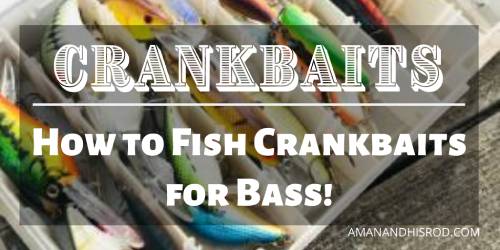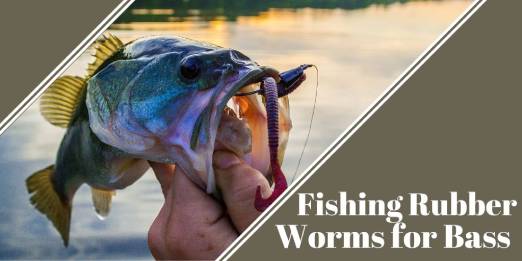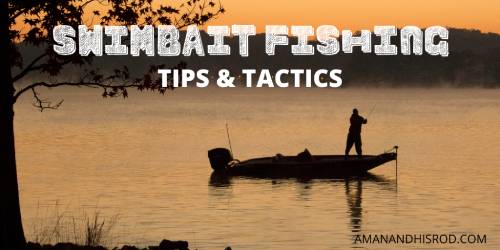
Fishing crankbaits for bass is a great way to fill the livewell quickly. No matter the style, color, or time of year, the concept of fishing crankbaits for bass remains quite simple.
Search out the fish and let the bait do the rest.
Crankbaits can produce epic results any time of year. Here I will go over some basic tips to put you on the path to bass fishing success.
This website is reader supported. Any purchases you make through links on this site earn us a commission at no additional cost to you. Thank you for your support!
I would like to ask, if you enjoy this post please share us on you foavorate social platform. By clicking any of the social links on this page you are helping us grow. We really appreciate you for doing this.
What is a Crankbait?
In case you were wondering, a crankbait is a fishing lure made of wood or plastic, that imitates a fish, and typically has 2 treble hooks attached.
Now there are thousands of variations when you compare cranksbaits. All of these variation can be broken down into two basic categories.
- Lipped Crankbaits
- Lipless Crankbaits
Can you guess what the difference between the two is?
Since there are not many ways to change a crankbaits makeup, we are left to only change components of the crankbait. We will go over some of these options in just a moment.
You can find the Best Crankbaits for Bass right here.
When to Fish a Crankbait
There is no bad time to fish a crankbait. These lures are all season baits and that is why they are so effective. I would say the best time to fish a crankbait is when the water temperature reached 58 degrees or so.
Here are my favorite times to fish a crankbait.
- Summer
- Winter
- At Night
- Around Rip Rap (big rocky banks)
Don’t forget that bass fishing at night can be lights out! Cranksbaits are a great way to catch them in the dark.
Fishing Crankbaits For Bass: Basic Equipment Needed
Before we go into the details of fishing crankbaits for bass, let us first get our equipment set up.
If you can, try and use a fiberglass fishing rod. Now there is an age old debate about graphite vs. glass crankbait rods. That’s a whole other discussion in itself.
Fiberglass crankbait rods have really come a very long way in the last 10 years. They are just as sensitive as graphite rods these days, but allow us to better set the hooks on bass.
The rods have become quite affordable as well. The Skeet Reese S-Glass is a darn good rod for the price.
A good reel for fishing crankbaits is one that can easily fight the resistance baits. As we know crankbaits wobble and dredge deeper and deeper applying some pretty good torque.
A reel with a gear ratio of at least 5.1 is desired, of coarse more is okay too. Ill stick with Skeet Reese Victory 2 baitcaster reel. The price is very affordable and I know for a fact that it lasts.
Line types, sizes, color all have a very specific place. For the simplicity of this article I am going say that fluorocarbon line is a good general all around fishing line for crankbaits.
We dont have to get crazy with prices while starting out. Some P-Line Floroclear line will work just fine.
Learn more about fishing line.
Types of Crankbaits For Bass
When talking about fishing crankbaits for bass it can be quite daunting to try and break down.
Lets start by going over the three main types of cranks. We have the floating/diving, lipless, and minnow.
Lets talk a little more about each one.
Floating/Diving Crankbaits
These crankbaits are distinguishable by the plastic lip near the front of the bait. The lips can be various shapes and size.
The premise is that the water resistance and angle cause the bait to dive into the water column creating an irresistible wobble.
What is a Lipless Crankbait?
Lipless crankbaits have even bigger lips on them…. Just kidding, as you may have guessed they have no lip at all.
They fall freely in the water column until they begin their retrieve.
Lipless crankbaits have generally flat sides that create a tight back and forth motion that many refer to as a vibration.
Minnow Style Crankbaits
The minnow crankbaits have a decent common ground between the other crankbaits.
With the longer body and small plastic lip, these cranks run relativity shallow. They retrieve with a medium wobble but work best when dead sticked.

Crankbait Fishing Tips and Tactics
Now that we have talked about out types of crankbaits its time to talk about how to use them.
Lets start off with color selection.
When fishing any bait its important to match the hatch. Crankbaits come in 100’s if not 1000’s of colors. Find one that matches the bait where you are fishing.
A couple of the most common patterns are going to be some form of shad and crawdads.
Parallel The Bank for Bass
If you have the opportunity always try and cast parallel to the bank. This will allow for your crankbait to remain in the strike zone for longer periods of time.
I talk about this more in my article How to Fish Swimbaits for Bass.
Parallel in s the key to take away here. It may not be the shoreline that you are paralleling, it could be a dock or cat tails. Keep the bait in the strike zone for as long as possible.
Beat Structure to Death
Say what? You heard me correct, drag, slam, hit, deflect, brush, or whatever else you can to that structure. Many times strikes will come just after you bump some form of structure.
Here is what Mike Iaconelli say about hitting structure.
90% of the strikes I receive from crankbait fishing occur when the bait bounces off something or changes direction.
Retrieving your crankbait is what brings these baits to life.
Sometimes bass want em fast, sometimes slow, sometimes they want that crankbait to shake it a little.
Here are a few of the most common crankbait retrieves that have been developed of the years.
Reel It Then Kill It
This is a method I get very excited to use when it works. In this method we reel our crankbait and then give an immediate pause.
Play with the pause and vary the length of the pause.
Many times the fish will bite while the crankbait is paused. The affect is similar to an injured bait fish.
Burning Your Crankbaits
My personal favorite way to fish crankbaits especially in early spring. With a small to medium sized square bill crank, find some shallow flats. Preferably, find some grass or some wood on that flat.
Burn these little dudes parallel to the grass or right over the top of the wood. If the bass are in there they won’t be able to resist a reaction strike.
Kneel and Reel
The kneel and reel has been a round for a quick minute. The theory with the kneel and reel is that you are able to kneel down on one knee and stick your rod tip straight down into the water.
This allows the crankbait to reach the maximum depth possible. With the right crankbait and a long rod you can easily get an extra 10 feet deeper using this method.
Crankbait Color Selection
When choosing a crankbait color its important to take a minute to observe our surroundings.
On a clear sky day with good water visibility I am going to use a more natural color selection.
I will stick with my shad patters or bluegill patterns. Something with details outlining facial features, gills, that sort of thing.
On the other hand we may have bad cloud cover or low light conditions.
Maybe the water is stained and the visibility is low. This is where one can afford to take out the more bold colors such as chartreuse or shiny colors.
Kevin Van Dam
Here is the greatest bass fisherman of all time talking about winter cranking.
Conclusion – Fishing Crankbaits for Bass
One Last tip I want to leave you with is this….
When fishing crankbaits for bass do not be afraid to be different. Be erratic and unpredictable in your retrieves. This will without a doubt increase your production.
I would like to ask if you enjoyed this post please share us to social media. By clicking any of the social links on this page you are helping us grow. We really appreciate you for doing this.
Also if you wish to purchase any of the products I talked about here today, just click on link or picture. I will earn a small commission at no extra cost to you. Thanks for reading.






